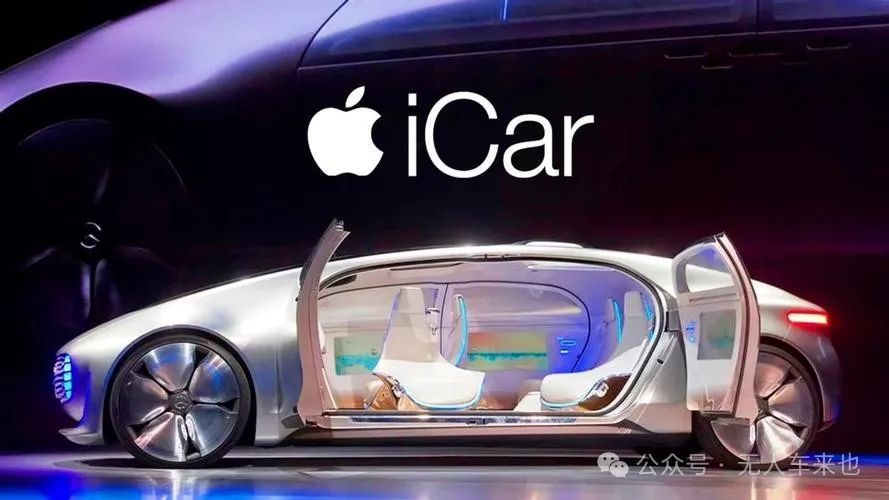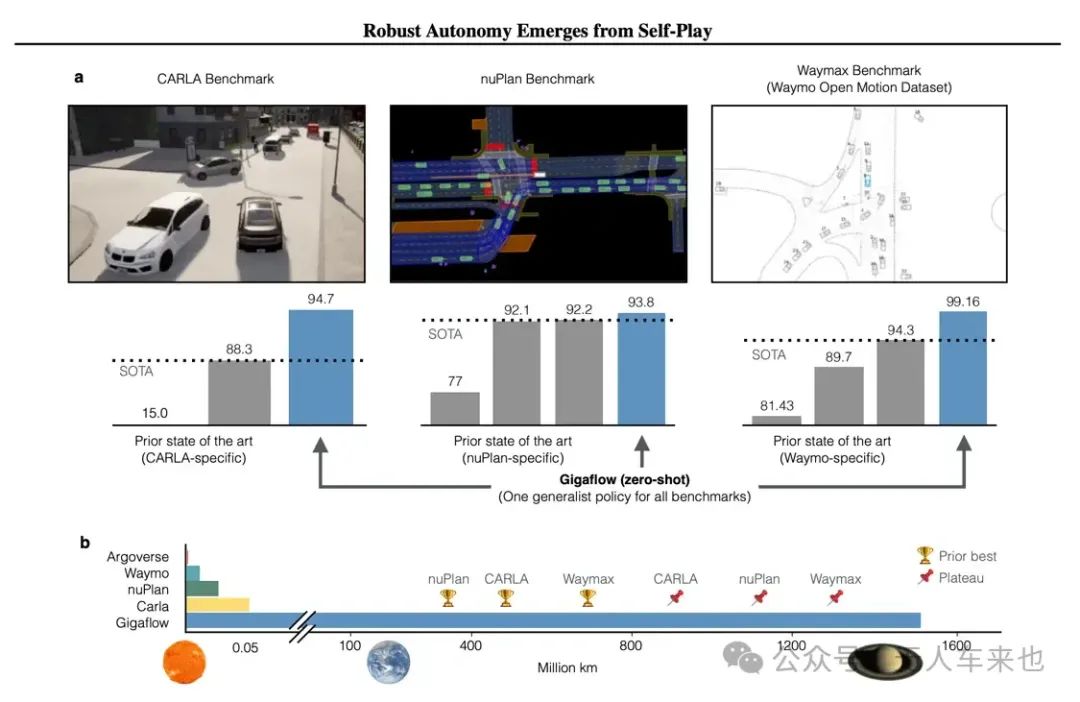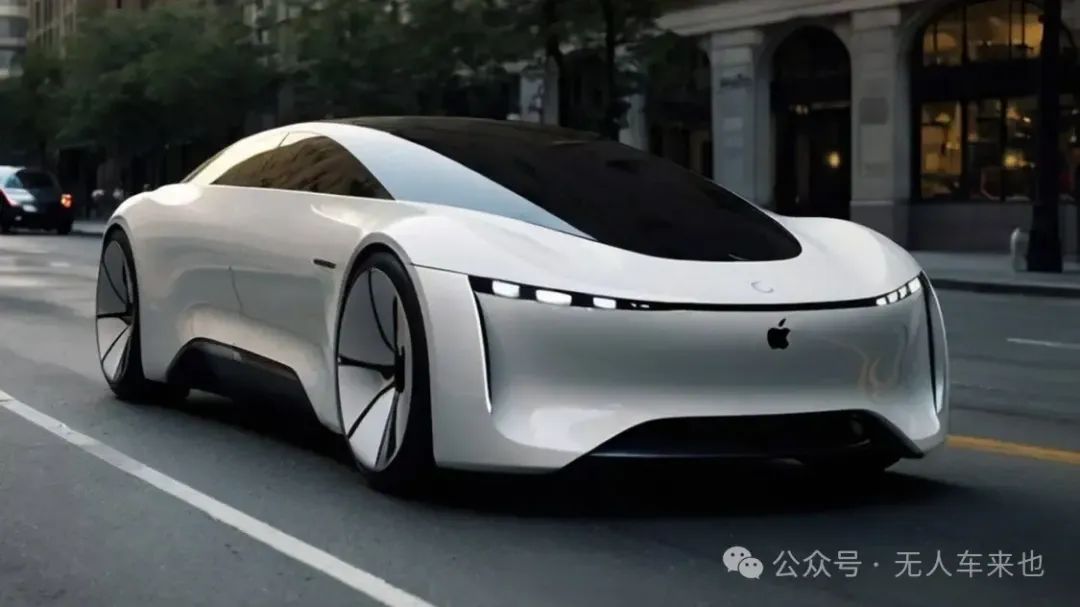Apple’s Autonomous Vehicle Project “Revitalized”? Can Self-Play AI Technology Propel It Past Competitors?
![]() 02/24 2025
02/24 2025
![]() 391
391
Introduction
We all recall Apple's ambitious venture into autonomous vehicles with "Project Titan." After a tumultuous decade marked by internal strife, strategic shifts, and executive departures, the project consumed billions of dollars, becoming a cautionary tale in the tech industry.
Surprisingly, Apple Car is back with a "secret weapon"!
Let's delve into this with Unmanned Car is Coming (WeChat ID: wurenchelaiye)!
(For reference, click:
"Apple Backs Down? Autonomous Driving Road Tests Cancelled Six Months Ahead of Schedule, Major Setback for Car Manufacturing Plan! Turning to AI?")

I. Apple Car “Reborn”, Self-Play Technology as the “Ace in the Hole”
On February 18, Apple unveiled a groundbreaking advancement in autonomous driving technology. The announcement was nothing short of extraordinary. Apple has integrated self-play technology into its autonomous driving system, yielding astonishing results.
Through simulated data generation and self-play training, Apple has demonstrated the potential to achieve high-performance autonomous driving without relying on extensive real-world data.
In just 10 days, it generated an astounding 1.6 billion kilometers of simulated driving data, outperforming Tesla's FSD and Huawei's ADS 2.0 in testing.
More impressively, the training cost has plummeted to 1/360,000th of traditional road testing, costing just $5 per million kilometers simulated. Tail scenario coverage has increased by 300 times, enabling the system to handle 99.9997% of extreme situations.
In zero-shot testing, where the system hadn't been trained for specific cities, it successfully navigated Shanghai's Lujiazui area and managed "Chinese-style crossings" on its first attempt. This capability is unparalleled.

Image source: Screenshot from Apple's document
The cornerstone of this achievement is the GIGAFLOW simulator, essentially a streamlined world model.
This simulator eliminates the need for scenario scripts or human driving data, with straightforward reward and penalty rules.
It simultaneously generates 38,400 "mini-worlds," each containing up to 150 vehicles and 8 randomly changing maps, simulating various complex traffic scenarios.
Apple also noted that traffic accidents still occur during simulated training, approximately once every 3 million kilometers. Compared to China's real-world accident rate of once every 35,000 kilometers, while the real world is more complex, this performance is commendable.
II. Self-Play Technology, the “Dual-Combat Technique” of Intelligent Driving
World models are not new, but Apple's application of self-play technology to autonomous driving training is revolutionary.
Apple excels at reimagining existing technologies. Its application of capacitive touch technology to mobile phones revolutionized the industry with the iPhone.
So, what is self-play technology?
Put simply, it allows AI to "fight" against itself, akin to a martial arts technique where continuous practice enhances one's abilities. The AI generates copies of itself or uses historical versions as opponents, identifying weaknesses and optimizing strategies through confrontation.
This concept gained traction in 2024, but the training approach was pioneered by AlphaGo (2016) and AlphaZero (2017). AlphaGo's victory over Lee Sedol was facilitated by self-play technology, where it battled its own historical versions, evolving strategies beyond human capabilities.

Image source: AI-generated image. Apple has applied this logic to autonomous driving. In the virtual world of GIGAFLOW, tens of thousands of "AI drivers" compete 24/7, simulating various complex scenarios, enabling the autonomous driving system to rapidly evolve.
Apple further stated that its system doesn't rely on lidar and can achieve L4-level autonomous driving solely through a vision system. This conclusion is supported by 1.6 billion kilometers of simulated data, proving that a pure vision solution combined with virtual training is viable.
Previously, lidar was considered the "eyes" of high-level autonomous driving, attracting over $100 billion in global investment. Now, it seems that a pure vision solution coupled with supercomputing power may be the ultimate solution.
III. The Future Trajectory for Apple Car
Apple's breakthrough in autonomous driving technology suggests it hasn't abandoned its automotive ambitions. Netizens speculate three potential paths for Apple:
First, it could collaborate with traditional automakers to provide autonomous driving solutions. For instance, partnering with BMW to integrate its technology, enhancing the driving experience for consumers.
Second, it could apply its technology to intelligent transportation systems, working with urban traffic management departments to optimize traffic flow, reduce congestion, and enhance urban transportation intelligence.
Third, it could revive its car manufacturing plan, though this would be challenging.
Currently, Huawei and Xiaomi have made significant strides in the automotive field. Huawei's full-stack in-house development and ecosystem integration have enabled ADS 3.0 to achieve NOA in mapless urban areas, covering major cities nationwide with an average daily learning data volume of 35 million kilometers. Deeply integrated with automakers, Huawei's AITO series sold over 500,000 vehicles in 2024 and plans to launch an L3-level system in 2025. Xiaomi, leveraging its popular products and rapid mass production capabilities, received over 100,000 orders for the SU7 in its first month, with monthly orders consistently exceeding 20,000. With an intelligent driving activation rate of 88%, Xiaomi plans to invest 30 billion yuan in R&D by 2025, aiming for a factory automation rate over 75% and supply chain management on par with Tesla.
If Apple enters the market now, it will face established user recognition and channel networks from Huawei and Xiaomi, necessitating market share competition. Moreover, Apple lacks vehicle manufacturing experience and would need to address production capacity and supply chain issues if pursuing in-house development. The Chinese market is fiercely competitive, with Tesla, BYD, NIO, XPeng, and Li Auto enjoying a first-mover advantage. Apple would confront pricing wars and localization challenges.
However, Apple isn't without opportunities. The key lies in choosing between Huawei's path and Tesla's path, deciding whether to be a service provider or an automaker. The first two paths may offer entry opportunities, while insisting on manufacturing cars would be difficult.
In summary, Unmanned Car is Coming (WeChat ID: wurenchelaiye) believes Apple's self-play technology is impressive and opens new possibilities for the company. However, car manufacturing is a marathon. Tesla took 18 years to become profitable, Huawei invested billions to establish a foothold, and Xiaomi still faces production challenges. Strong technology alone isn't enough; the market doesn't favor latecomers. Whether Apple's "restart" will succeed depends on whether Tim Cook chooses to be an ecosystem weaver or a daring lone warrior in car manufacturing.
What do you think, dear reader?
References
Leikeji: "Apple Releases Autonomous Driving Document, Will Self-Play Technology Become the DeepSeek of Intelligent Driving?"







